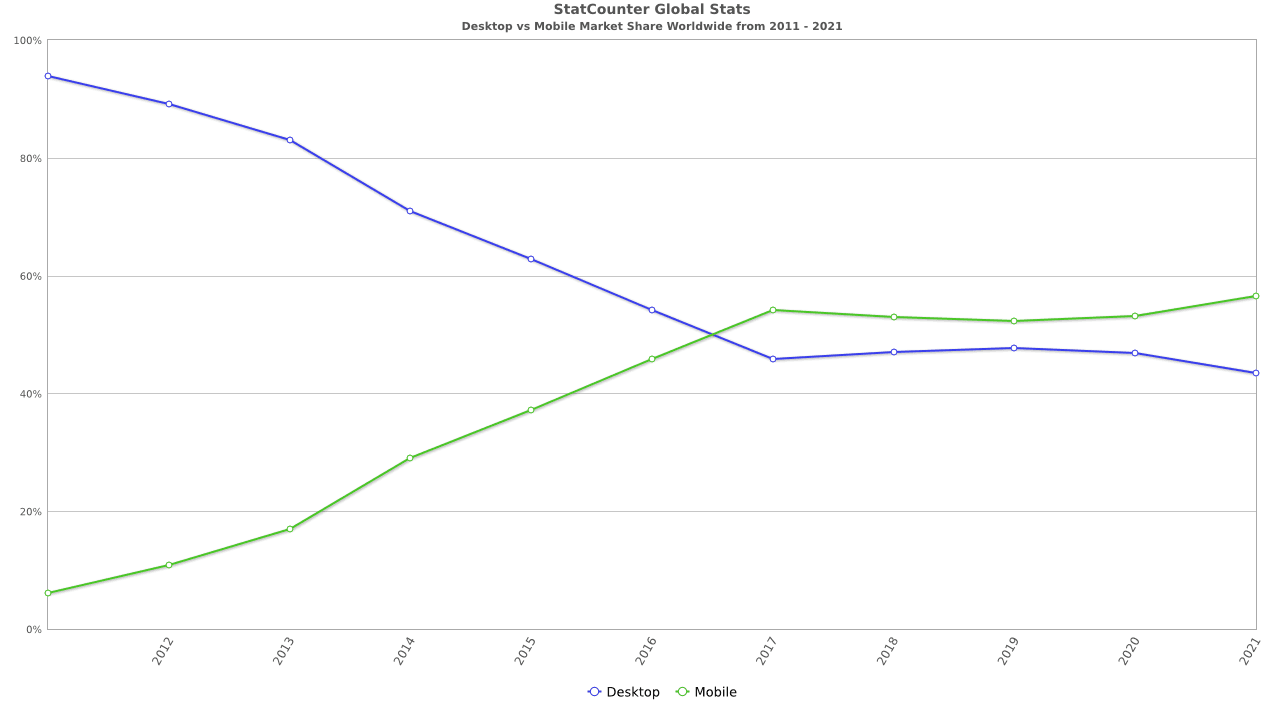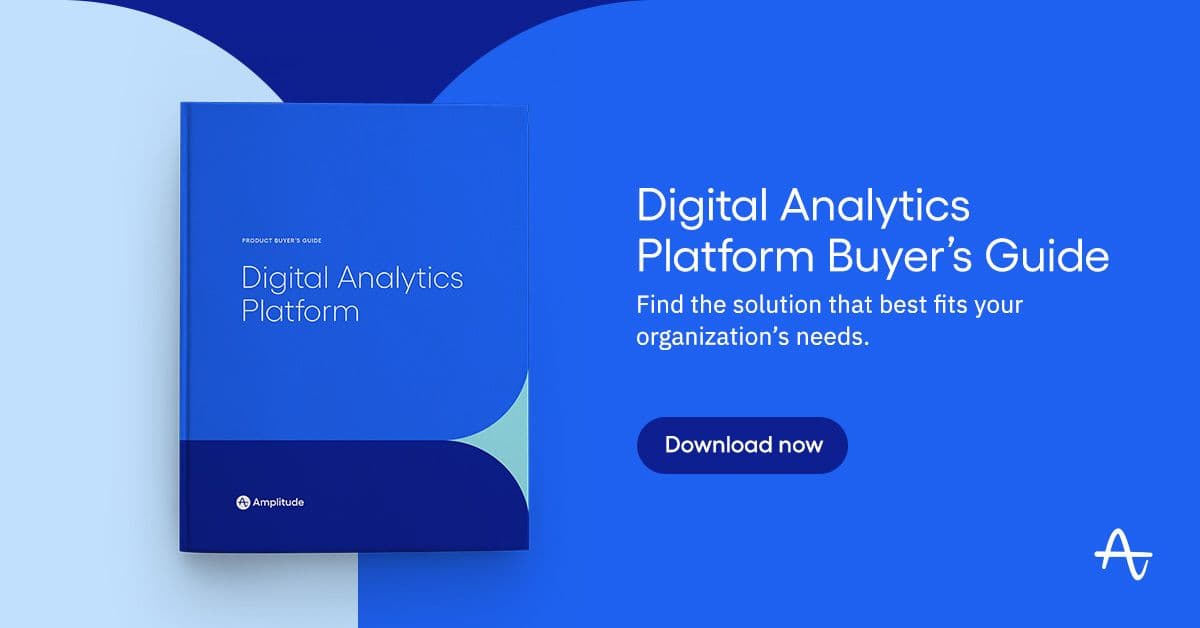Where Should the Digital Analytics Function Reside within the Organization?
What are the factors to consider when deciding where the analytics function should reside?
In a previous post, I discussed why I felt that websites were actually products. I posited that websites should be treated more like products or apps, such that they are improved at the same pace as digital products and mobile applications. I don’t see why there should be a distinction between websites and mobile apps, since both are used by the same customers and oftentimes are meant to achieve the same objectives.
In another post, I discussed why marketing and product teams need to increase collaboration in order to ensure cohesive customer experiences. I mentioned cases where organizations use different resources and different data sets to view the performance of websites and mobile apps. This bifurcation based upon platform (web vs. app) doesn’t really make sense and can make organizations less agile.
The different treatment of websites and mobile apps and the lack of collaboration between marketing and product (formerly known as “IT”) are both borne out of the evolution of websites and mobile apps. The sudden explosion in mobile apps that occurred after the launch of the iPhone created new “product” teams (which I define as the cross-functional team that endeavors to improve the product) that were assembled to rapidly build mobile apps. These product teams grew over time as mobile apps grew in importance and created a schism between the website team and the mobile app team. The website was traditionally built and managed by marketing while the mobile app was built and managed by the product team.
One of the more interesting questions that has arisen out of the separation of marketing and product is the home of the digital analytics function. For most of my career (managing digital analytics teams at Salesforce and consulting on digital analytics at Omniture, etc.), digital analytics has resided in and was funded by the marketing department. This made sense, since digital analytics began as a way to view the impact of digital marketing campaigns. And even though many of the digital experiences customers encounter are migrating to mobile applications, many organizations have continued to use the same digital analytics platforms they have always used.
But many “digital-first” organizations (e.g. Twitter, Doordash, Uber) have put digital analytics in the product organization. These organizations viewed their digital products as core to their business and assumed that the teams making the digital products would manage the analytics for the products. But I have also spoken to traditional brick and mortar organizations that are shifting digital analytics from marketing to product or creating hybrid teams with members of marketing and product.
At the same time, many organizations have begun creating separate digital analytics/data science teams that are not directly part of marketing or product. These teams focus on data collection and analysis and often partner with other departments to help promote the use of digital data within the organization. In some cases, these teams roll up into a business intelligence function and in other cases they sit underneath a Chief Data Officer.
Where Should Digital Analytics Live Within the Organization?
So where should the digital analytics function reside at your organization? Should you simply keep it where it has always been or as data becomes more vital to the organization, should you reassess its location in the organization?
I have found that choosing the home of digital analytics within the organization can depend upon many factors. The following will share some of the things I would consider when thinking about where the digital analytics function should reside within the organization.
Importance of Customer Acquisition
For some organizations, sales and marketing are critical. In these organizations, creating brand awareness, generating leads or new customers and sales follow-up are the lifeblood of the organization. This is especially true for organizations in which the product being sold has little to no digital aspects. An example of this might be a refrigerator/freezer supplier like Sub-Zero. They want people to know about their products and choose them over other brands, but there aren’t many ways that the product team can increase sales. Because of this, Sub-Zero might choose to have the digital analytics function reside in marketing since I would imagine that most of its efforts are related to sales and marketing.
Nowadays, however, there are fewer and fewer of these situations, since almost every organization has built, or is building, digital applications to better service and connect with customers. For example, Sub-Zero might have a mobile app that allows you to control your appliance and, in the future, may even tell you which products you need to buy at the store or automatically order them for you. Digital transformation is forcing almost every organization to add a digital component to their product or service, which may lead to fewer and fewer organizations deciding to keep the digital analytics team in the marketing department.
Product Focus?
While marketing teams often think of digital analytics as a way to optimize marketing campaigns and conversion, product teams think of it in terms of using data to improve digital applications. Product teams tend to iterate quickly and are often testing many different features at any given time. They have traditionally used data to determine whether new features are working or not. Product teams expect that they will be empowered to tag and collect data on their own product features and see how they are performing. They will not want to rely on their marketing counterparts to tell them how their products/apps are performing, simply because the budget for digital analytics has traditionally been in the marketing department.
Importance of Mobile App vs. Website
Most organizations I speak to these days tell me that more and more of their digital customer interactions are moving from websites to mobile applications. Younger generations who have grown up with smartphones tend to only use mobile devices. Traffic to websites will likely continue to decline over the next few years. Accordingly, organizations may have to follow their customers and put more resources into mobile applications vs. websites.

Source: https://gs.statcounter.com/platform-market-share/desktop-mobile/worldwide/#yearly-2011-2021
Of course, there will always be some organizations in which the website is critical and where mobile apps are not very important. In these cases, while I would still advocate that the website be treated like a product and be owned by the product team, I could see keeping the digital analytics team in the marketing department if, and only if, the marketing team manages all aspects of the website. But if the majority of digital traffic is coming from mobile applications and product teams are managing those applications, it makes sense that the digital analytics function would reside within the product team.
Analytics/Data Science Team
An increasingly popular option for the placement of the digital analytics team is in its own, independent team. These analytics or data science teams often sit outside of marketing or product and act like umpires or referees for the organization. The idea is that they do not have a vested interest in the success or failure of digital experience projects, but rather, act as an independent body that scores the impact of website/app changes. Sometimes, these teams fall under business intelligence and in other cases, they sit underneath a Chief Data Officer.
In some cases, analytics resides in the analytics or data science team because they are responsible for the overall implementation and determining which data elements to collect. Having this function centralized can help ensure that there is consistency in the data taxonomy and help increase data reliability.
This model can be effective if done correctly, but one of the downsides of this approach is that a separate team may not have the context of what is being done in marketing or product. Without proper context, it can sometimes be difficult to understand if a new website section or product feature is adding value. Therefore, if a separate analytics/data science team, it’s important that they work collaboratively with their stakeholders in marketing or product, which can create process inefficiencies or redundancies at times. This is especially true at large organizations.
Centralized or Self-Service Model
Another factor to consider when choosing the location of the digital analytics function is whether your organization will use digital analytics predominantly through a centralized or self-service model. If your organization desires to have a centralized model, perhaps leveraging an analytics center of excellence, it may make more sense to have a separate analytics/data science function. But if it is important for your organization to have hundreds of employees that collect and interpret their own data, then it may be better for the function to live directly within the team that uses data the most. If it is the latter, the digital analytics function may reside in marketing for sales/marketing heavy business models and in product for more app-centric business models.
Of course, there may be other factors to consider, such as the size of the organization or its digital maturity, but the preceding items are the ones that I think about the most when discussing where the digital analytics function should reside.
A simplified way to think about the placement of the digital analytics team is to consider the following questions:
- Are we funding digital analytics to improve our marketing efforts or to improve the actual digital product experience (or both)?
- Are most of the decisions made from digital analytics focused on improving campaign performance or improving digital product performance?
- Which department in the organization is best equipped to analyze and interpret the data produced from digital analytics products?
- Are our employees advanced enough to collect and interpret their own data or do they require assistance from a team dedicated to data analytics and with deep analytics expertise?
The answers to these questions can be helpful in determining where the digital analytics team should reside in your organization now and in the future.
I did a quick survey of folks I am connected to on LinkedIn, and here are the results:

There were some really interesting comments associated with this survey post, so I recommend you check them out.

Adam Greco
Former Product Evangelist, Amplitude
Adam Greco is one of the leading voices in the digital analytics industry. Over the past 20 years, Adam has advised hundreds of organizations on analytics best practices and has authored over 300 blogs and one book related to analytics. Adam is a frequent speaker at analytics conferences and has served on the board of the Digital Analytics Association.
More from Adam





